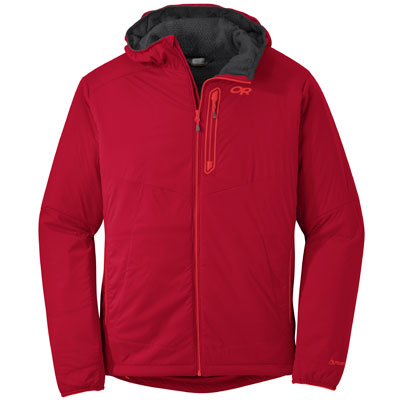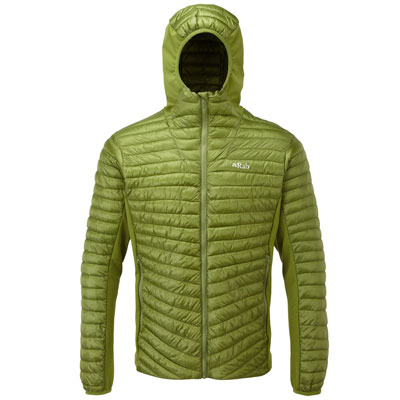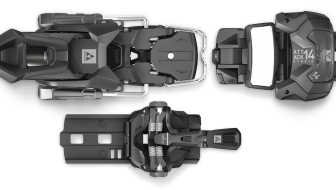Skinning is typically a sweaty affair where a lightweight baselayer and a thin shell will most often suffice. But some days—when the tempo is slow, the wind is blowing or the temperature hovers around zero—require a little extra warmth. Insulation-makers have honed in on this need, introducing new synthetics meant to offer warmth and exceptional breathability. These layers, intended for all-day wear, are soft to the hand and stretchy with a sweatshirt-like feel. But they’re also among the most technical pieces of insulation out there.
Patagonia Nano-Air Light Hybrid Hoody

Patagonia pioneered the world of active insulation with their Nano-Air jacket, a soft, stretchy, warm and breathable layer. The new Light Hybrid takes that breathability to another level, paring down the weight of Patagonia’s proprietary FullRange insulation to 40 grams and positioning it throughout the hood, chest, shoulders and tops of the arms. The rest of the jacket—the high-sweat areas—are made with a stretchy waffle knit that’s even lighter and more breathable than the insulation. The hood fits snugly, as does the rest of this layer; it offers the most athletic cut and lightest insulation of the four jackets here. $249, patagonia.com
Outdoor Research Ascendant Hoody

Outdoor Research’s pinnacle midlayer relies on Polartec’s most advanced insulation—Alpha Direct. Rather than using synthetic clusters contained within fabric, Alpha Direct employs a thinly knit fleece of hydrophobic fibers with no backer—just the jacket’s outer face fabric—so the inside has a soft, fleecy and airy pile. The pockets are also lined with Alpha, but without zippers, they’re more functional for warming hands than for storage. The cuffs are a bit baggy, at least compared to the Patagonia’s snug fit, but this layer is nearly as stretchy and breathable for low-sweat ascending. Also available as a hoodless jacket ($215) and vest ($175). $249, outdoorresearch.com
Mountain Equipment Transition

Mountain Equipment’s Transition is like a puffy pillow, offering the loftiest feel of these four jackets while hardly tipping the scales at less than 1 lb. The entire body, arms and hood are insulated with 60 grams of proprietary Polarloft synthetic insulation, designed for stretch, warmth and breathability. The face fabric is slightly weightier than that of the Patagonia and Outdoor Research hoodies, but it’s still plenty soft to the touch—stuffing this jacket into its right storage pocket makes an enviable half-gallon-sized pillow. The Transition’s hood is the closest on this page to being helmet compatible. $225, mountain-equipment.com
Rab Cirrus Flex Hoody

With the Cirrus Flex, Rab takes a different approach to insulation—both from traditional synthetics and from what else is featured here. This jacket has the baffled look and lofty feel of down insulation, but it’s actually synthetic, using polyester fibers arranged in down-like cloud structures—hence the horizontal baffles—with a density equivalent to 600-fill down. Since it’s synthetic, it will maintain loft when sweaty, but stretchy panels of thin, gridded fleece extend down the sides and through the sleeves and hood for flex and breathability. While this jacket lies on the warmer end of this page’s spectrum, any difference in weight from the other three is imperceptible. $200, rab.equipment










Related posts:
Deep Threads: Eight essentials for powder-day touring
Beyond the Gates: How the BRASS Foundation is teaching racers avy safety
2019 Skills Guide: The Level Two Experience
The Snow Pro: Janelle Smiley talks the art of efficiency